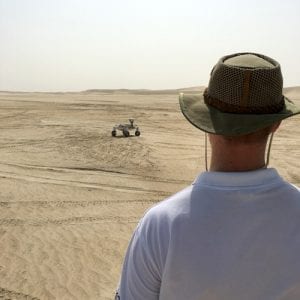
On 29/30 July 2016, SpaceWatch Middle East accompanied PTScientists in the desert of Qatar to test their Audi Lunar Quattro rover that they hope to send to the Moon by the end of 2017 to win the Google Lunar X-Prize. SpaceWatch Middle East COO Torsten Kriening spoke with PTScientists CEO Robert Boehme after the rover tests were completed.
SpaceWatch Middle East is grateful and excited to have exclusively attended your desert tests in Qatar! Mr. Boehme, what is the purpose of the test that brought you to the Middle East at the height of the summer?
Hello, great to be here. The purpose of the test was to understand and to verify different sites here in the desert for their soil composition to find areas where we could do analog mission tests in the future. An analog test for us is a location with specific characteristics that really assembles the mission requirement we will encounter doing a certain phase of the mission. That spot should be as far away from civilization that you really can test everything undisturbed. Usually you just test specific things, like traction of the wheels or the different soil compositions. But we are looking for a site for a full analog mission test very soon, where we test in an unknown area without reference points for the operator and having the operator far away. So we can test the entire chain of communication, information exchange, rover behaviour and more. So that this test will be successful, meaning as harsh as possible, we have to understand the capabilities of the desert in the region, and now specific to Qatar. But we learned a lot of interesting things from our current test mission.
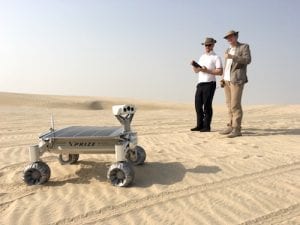
Can you give us a brief overview about your entire mission?
The Mission to the Moon is basically a 14 and a half-day long mission and the first time that somebody goes privately to the Moon. Our goal is to go to the Moon to visit and to analyse what is happening at the landing site of Apollo 17. We want to understand what happened there to the Apollo 17 equipment after 45 years of exposure to the harsh environment and heavy radiation. All of this is being done in very close agreement with NASA.
What does your mission have to do with the Google Lunar X-Prize (GLXP)?
Part-Time-Scientists are taking part in the competition. The GLXP is a really basic competition as you just have to go to the Moon, drive 500 metres and send an HD video back. What we aim to do is to fulfill a much larger vision. We are focused on the commercial space transportation topic and try to showcase that you can bring technology into space in a very cost effective and efficient manner. For us the GLXP is just the first phase in our sustainable Mission to the Moon. Our Mission-1, the GLXP competition, will already have a large number of commercial payload clients on board. Our self developed spacecraft ALINA can carry up to 100 kilograms to lunar orbit or to the lunar surface. We want to show that we are ready for future missions to our closest neighbor in the Solar System. Our activities can also help also the Moon Village initiative of the European Space Agency and others.
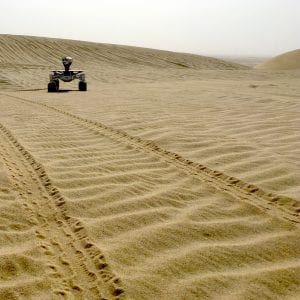
Why are you doing this and what inspired you to start your Mission to the Moon?
My first inspiration for space came from the classic science fiction authors. But where we started with was the GLXP. This competition inspired us to start Part-Time Scientists, a group of six young scientists and engineers that had an interest in this idea. That was eight years back, and now there are 35 people in the company that is completely in private hands.
When we started the project, space exploration was not affordable for everybody. Mainly the big space agencies has done it. Private space exploration did not exists for various reasons. We strongly believe that private initiatives are important and needed.
So we started to develop different technologies and created a plan for how that technology will make commercial sense in the field of space exploration. We believe that in the near future you can make revenue in this field.
Do you think that commercialization of space is possible?
Yes, definitely, I think so. Today the satellite launch and the communication satellite markets are pretty well commercialized. Entrepreneurs like Elon Musk with SpaceX or Jeff Bezos at Blue Origin are showing the new way. But all other fields like Earth observation and space exploration are mainly driven by governments. Here on Earth we have the ground segment and downstream applications that are pretty well commercialized and used in everyone’s daily life.
All other areas are struggling with privatization and we want to showcase that if you approach space differently and drastically lowering the cost point. Then you can bring it to a point where it is not only possible, but it is commercial viable, because it will enable others to do more in space who are currently holding back with their efforts. They simply can’t afford or don’t have the access to space. Space today is a business where you only can take part if you having billions of Euros. We want to inspire the next generation that space is still cool and worth aiming for.
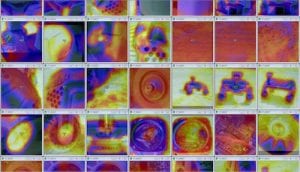
The results of your tests are secret, but can you give us a few hints about how the tests went?
One of the key lessons is that the desert in the summer is a really hot and dry place! This is one of the first things you learn – don’t spend too much time outside there. Other than this, it helps us to learn things that we can’t learn in laboratory tests. We have already a lot of laboratory experience with our hardware, such a thermal labs or cooling chambers , but putting it together and operate the equipment in such a desert environment makes the difference.
Another lesson was very surprising about the capabilities of the rover to climb on slopes. The rover is perfectly balanced and designed to perform in both directions, yet in the desert it climbed slopes moving backwards better than moving forward, a result that was unexpected. With this result we have to go back to the laboratory again and figure out where that came from.
We also recognized that the sand in the desert is not the same in all places. That was very surprising to us, as we expected just one kind of sand. There were at least three different sorts we found and tested the rover on. There were, for instance, one spot where the sand had a kind of crust over a powdery sand, then another spot, mainly on top of the dunes, the sand was very soft, loose and round. And also we found a powdery sand. This is very interesting for us for the final design of the tires. We are happy that the rover managed to drive on all of the tested environments. Another aspect we really appreciated was talking to locals that know the desert and getting their input for optimizing the design of the tires.
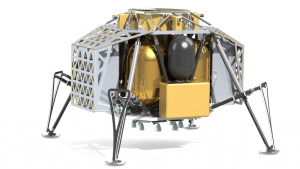
Two weeks ago you presented the spacecraft ALINA to the press, now you are doing the tests for the rover. Will we see the rover soon on the Moon?
We hope so. The earliest launch opportunity we have is by the end of 2017 and we are really pushing forward to achieve that target. But I think before we go to the Moon we have to do a lot of testing and this will also give us the chance to come back to the desert soon again here in the region. And this will probably be a full analog mission test as explained earlier.
This is all very exciting! SpaceWatch Middle East wishes you good luck for a successful mission and we are looking forward to following your progress.
Original published at: http://spacewatchme.com/2016/08/audi-lunar-quattro-rover-survives-the-tests-in-the-desert-of-qatar/
 SpaceWatch.Global An independent perspective on space
SpaceWatch.Global An independent perspective on space

